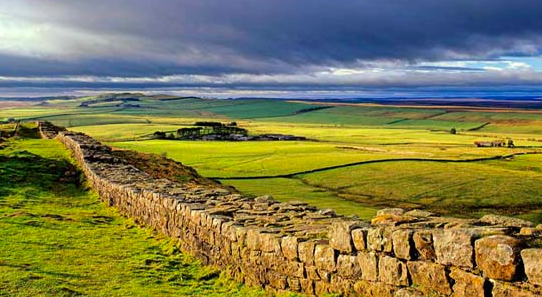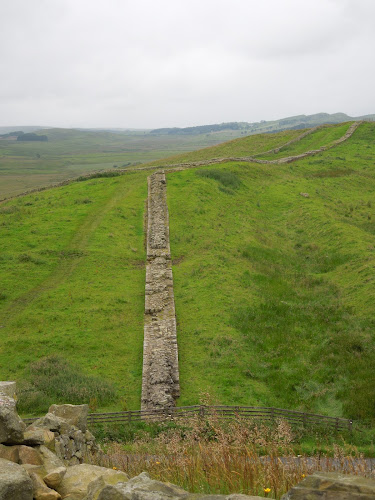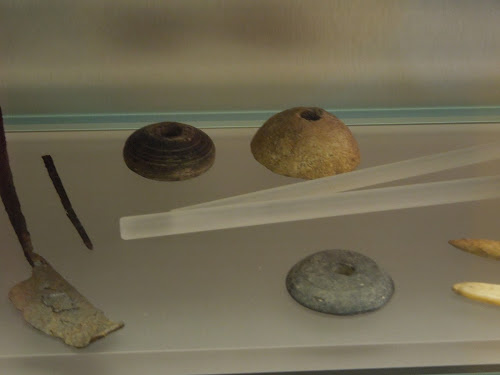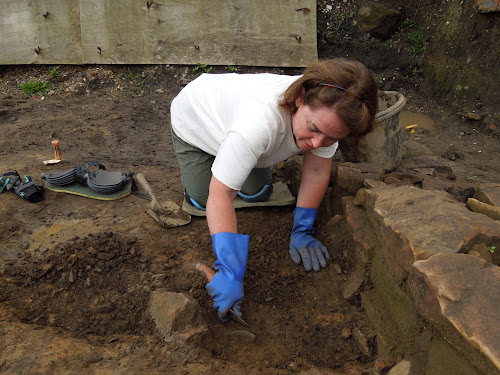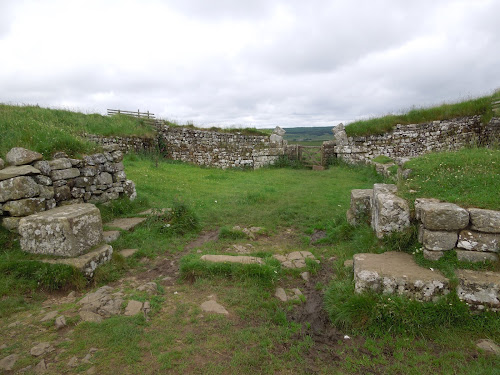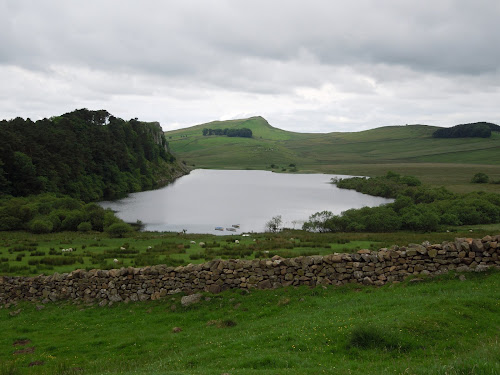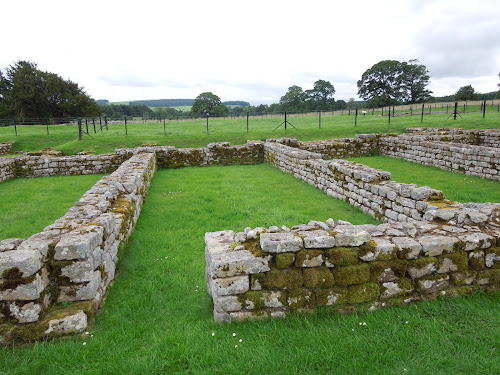Up and over we go!
...must come down. Jennie, my friend and travel companion makes her way down one of the many "hills."
Several sections of the hike require walking through farm property. Can you guess where the builders of this centuries old farmhouse got the stone to build with? Look closely and you'll see the signature square-cut blocks from the wall.
The cows did not look amused, so we steered clear of them!
This altar from the fort sits at the entrance to the farm. Fellow walkers have left coins as offerings.
One of the most spectacular sights along the wall. I was thrilled when I realized we didn't have to climb it! This is an old quarry.This is one of the best and highest preserved sections of the wall.
Everywhere you look there are clues to the past, but the land hides many secrets beneath.
As I learned on the dig, you must look for "the humps and bumps" in the landscape. The vallum (the ditch around a fort) is unmistakable
Jennie taking what we call a "panting break" on a steep uphill climb.
Truth be told, I'm taking a break, too, insisting we stop for a photo!
Another climb ahead!
Another break to look back at our latest accomplishment. A lovely straight stretch of wall, too.
These low bits are jokingly referred to as "Hadrian's Shelf."
Up again!
Yikes! This time horses are waiting for us. I wonder what they think of all the walkers?
At the very top we had to go on all fours to negotiate a very craggy and muddy bit.
A light mist waiting for us at the top, but it was absolutely worth it when we reached the highest point.
